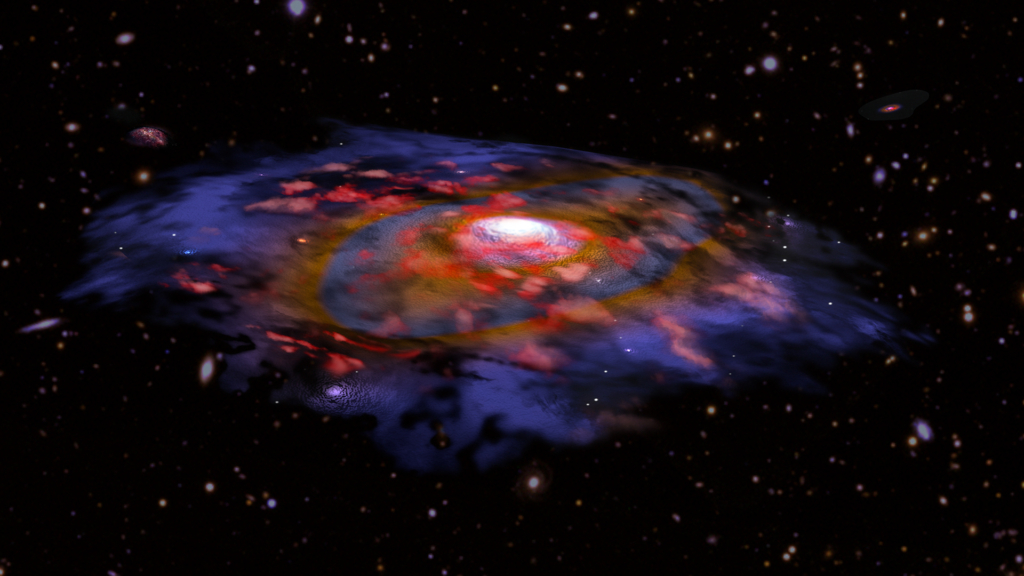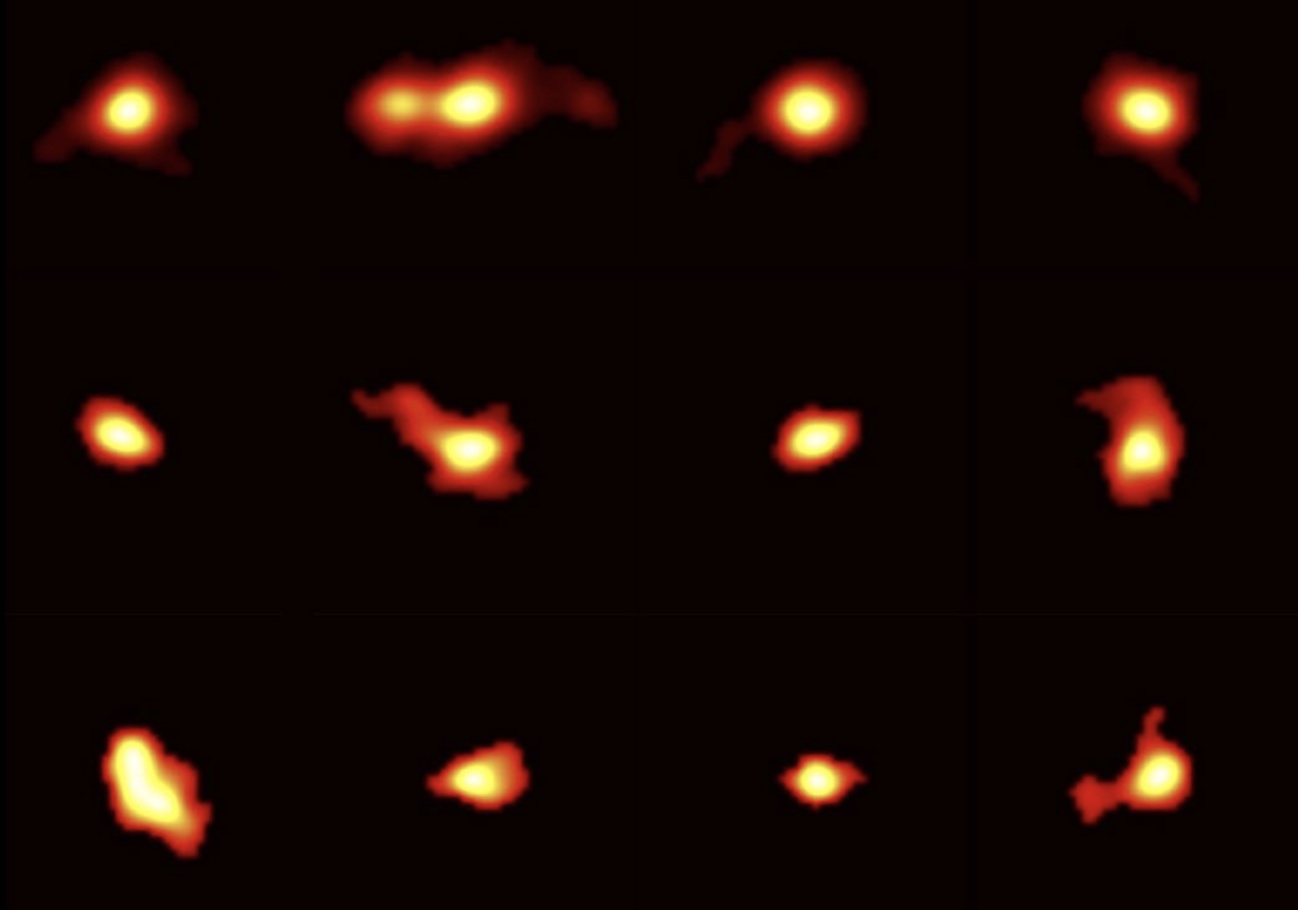
ALPINE appeared in a Caltech News story. Also, our brand-new ALPINE public page is now online! Check it out here.
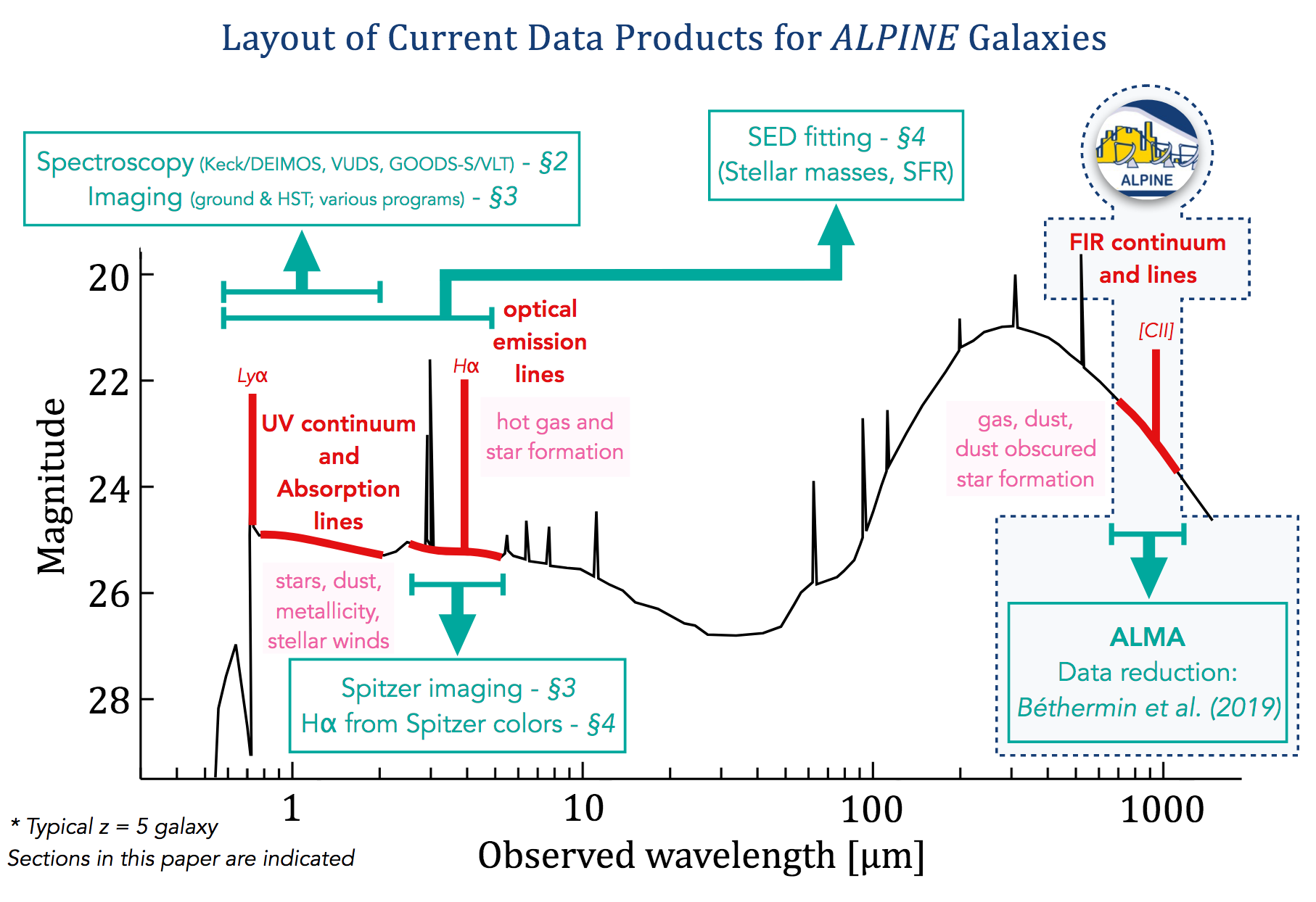
ALPINE is the largest multi-wavelength survey that studies galaxies in the early universe from ultra-violet to far-infrared wavelengths. In this paper, we describe the ancillary data products and basic measurements for the ALPINE galaxies.
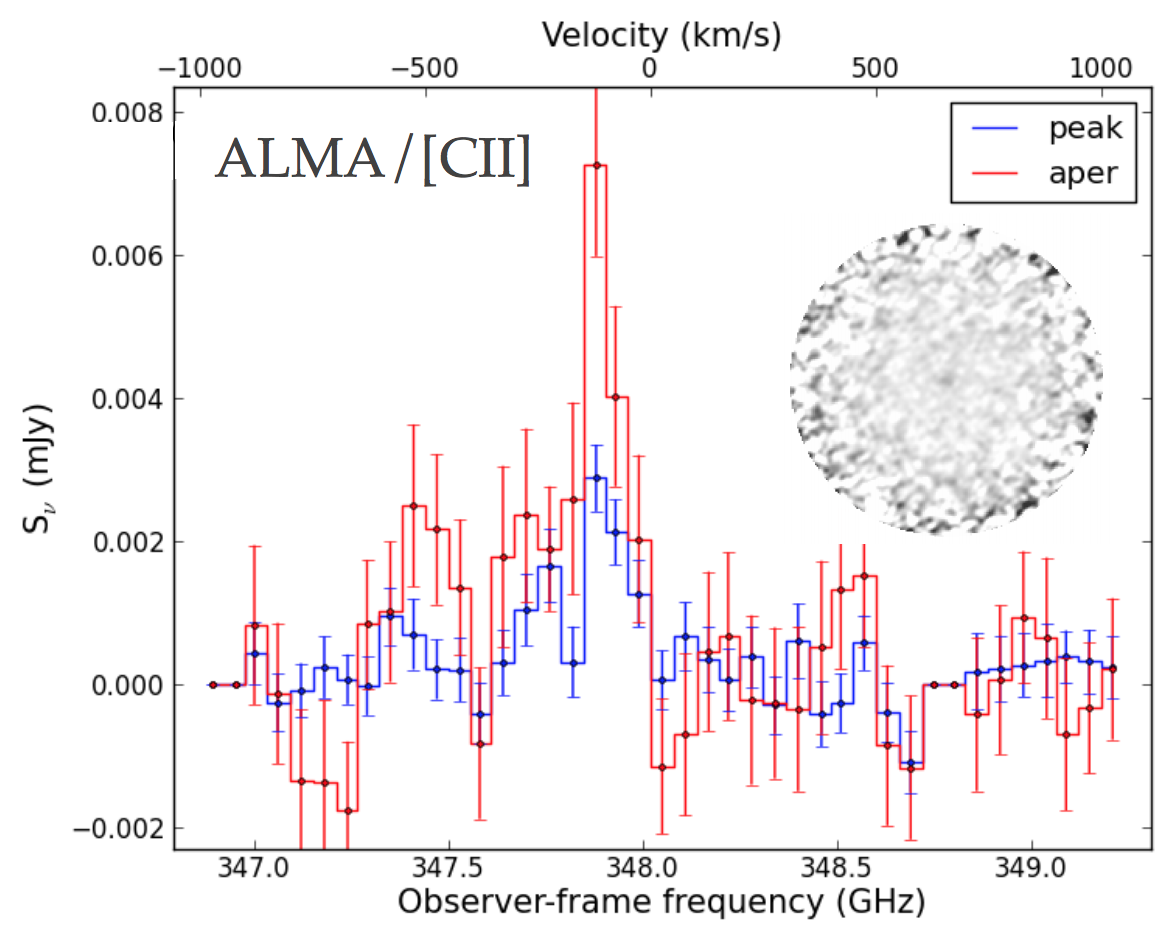
A large amount of data in the ultra-violet has been taken of galaxies in the early universe. These samples build the basis for observations at other wavelengths and are therefore the foundation of a multi-wavelength (or panchromatic) study of the first galaxies. This conference proceeding shows the important role of ALPINE in extending the legacy of current galaxy samples with far-infrared observations.
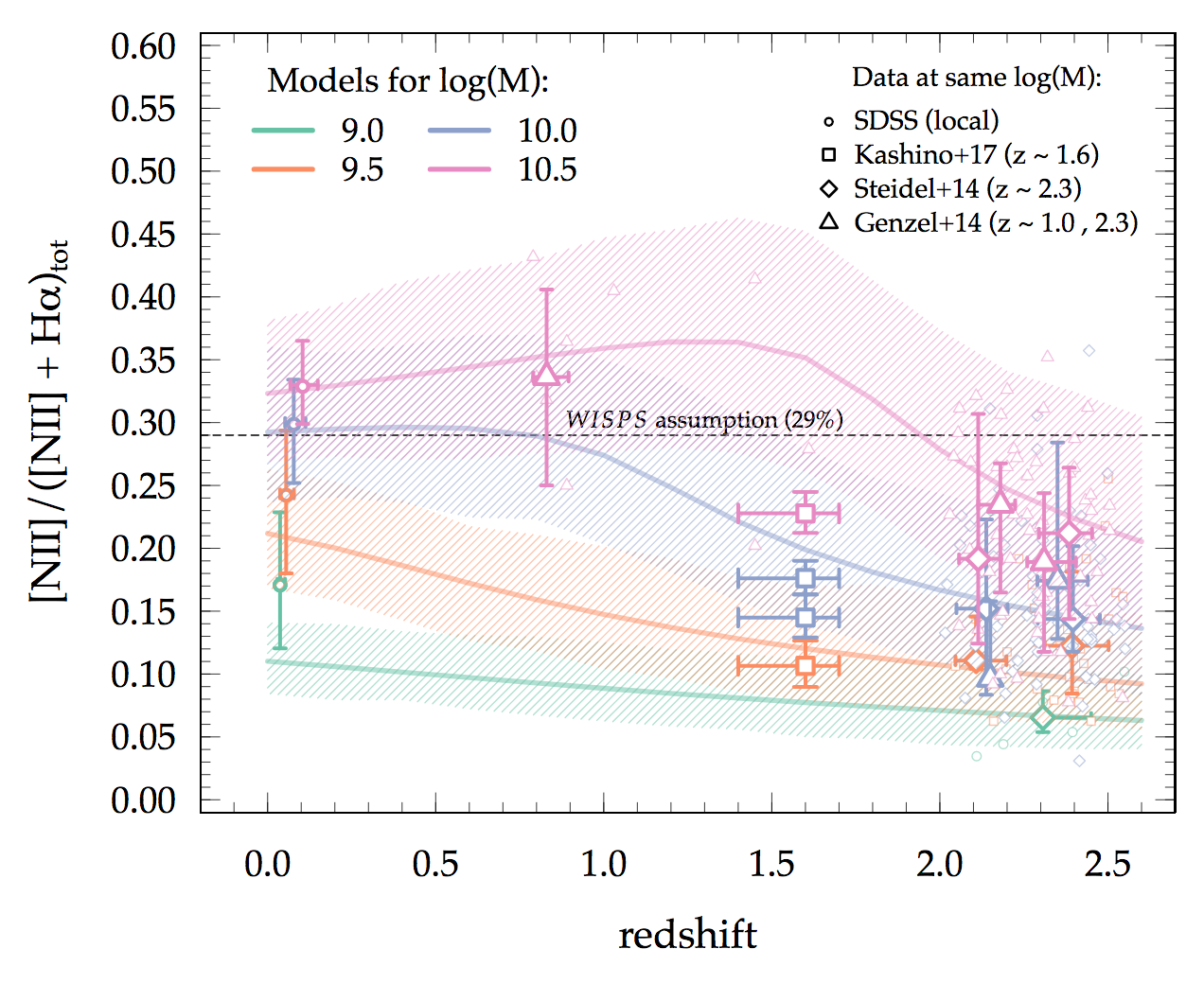
Galaxies in the early Universe are not very different from some of today's galaxies. We use such "local analogs" to derive an empirical model on how the emission line properties of galaxies changes as a function of cosmic time and their stellar mass. Our model primariliy focuses on the derivation of the [NII]/Hα ratio. These lines are unresolved in future spectroscopic missions (such as Euclid or WFIRST), hence our model can be used to derive corrected Hα luminosities.

PI: O. LeFevre, A. Faisst (North-America lead) +5
Ionized Carbon (C+) at 158μm is an important tracer of the Inter-stellar medium (ISM) in galaxies, hence their formation processes. So far, only a handful of galaxies in the early Universe have such measurements.
ALPINE will measure C+ as well as 158μm continuum for 122 galaxies more than 12 billion years in the past. With ALPINE we can study for the first time at these epochs
- the mechanisms which fuel the initial growth of typical galaxies in the early Universe
- the ISM, dust content, and gas fractions in infant galaxies.
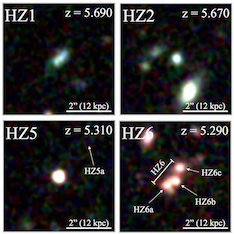
The dust properties of galaxies in the first billion year after the Big Bang little studied due to small samples and measurement uncertainties.
In this new study, we use the Hubble Space Telescope (HST) to characterize the dust properties of 10 galaxies living 12 billion years in the past. The new HST imaging data together with existing optical and ALMA (far-infrared) observations on COSMOS allowed us to measure the ultra-violet properties of these galaxies more accurately than ever. It turns out that most of these young galaxies have similar dust properties as the Small Magellanic Cloud, which is a metal-poor dwarf galaxy orbiting around our Milky Way.
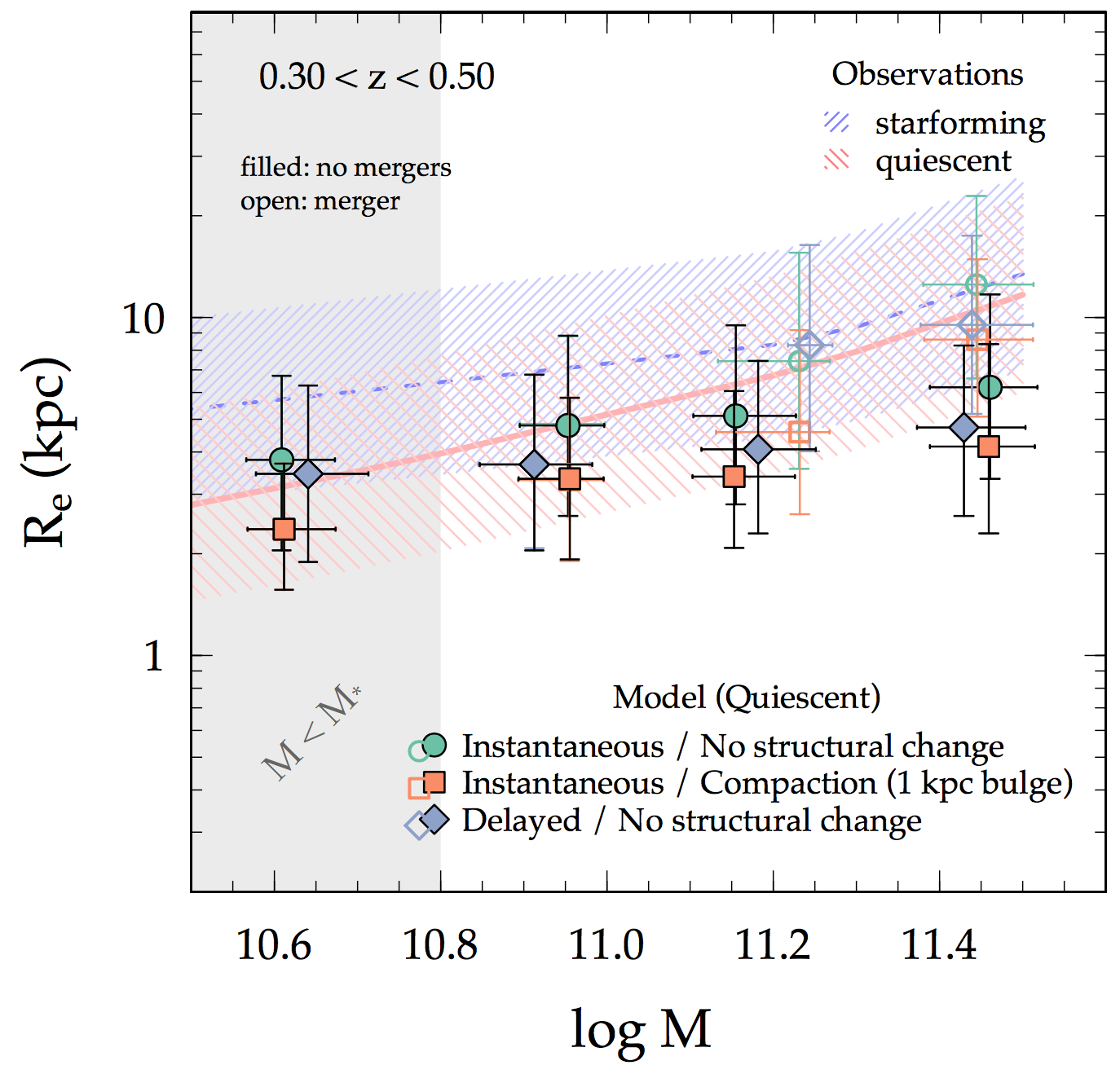
What stops the formation of stars in the most massive galaxies in our Universe? Are these processes smooth or fast and violent?
We use an empirical model to describe the evolution of star-formation, stellar mass, and size of star forming massive galaxies and apply different processes that stop the formation of stars. By comparing this model to the observed stellar mass vs. size relation of quiescent galaxies we find that a central starburst (maybe triggered by a merger event) with a fast consumption of gas (the fuel for star formation) fits best for very massive galaxies. Furthermore, subsequent individual growth of the galaxies via mergers is necessary to meet the observations.
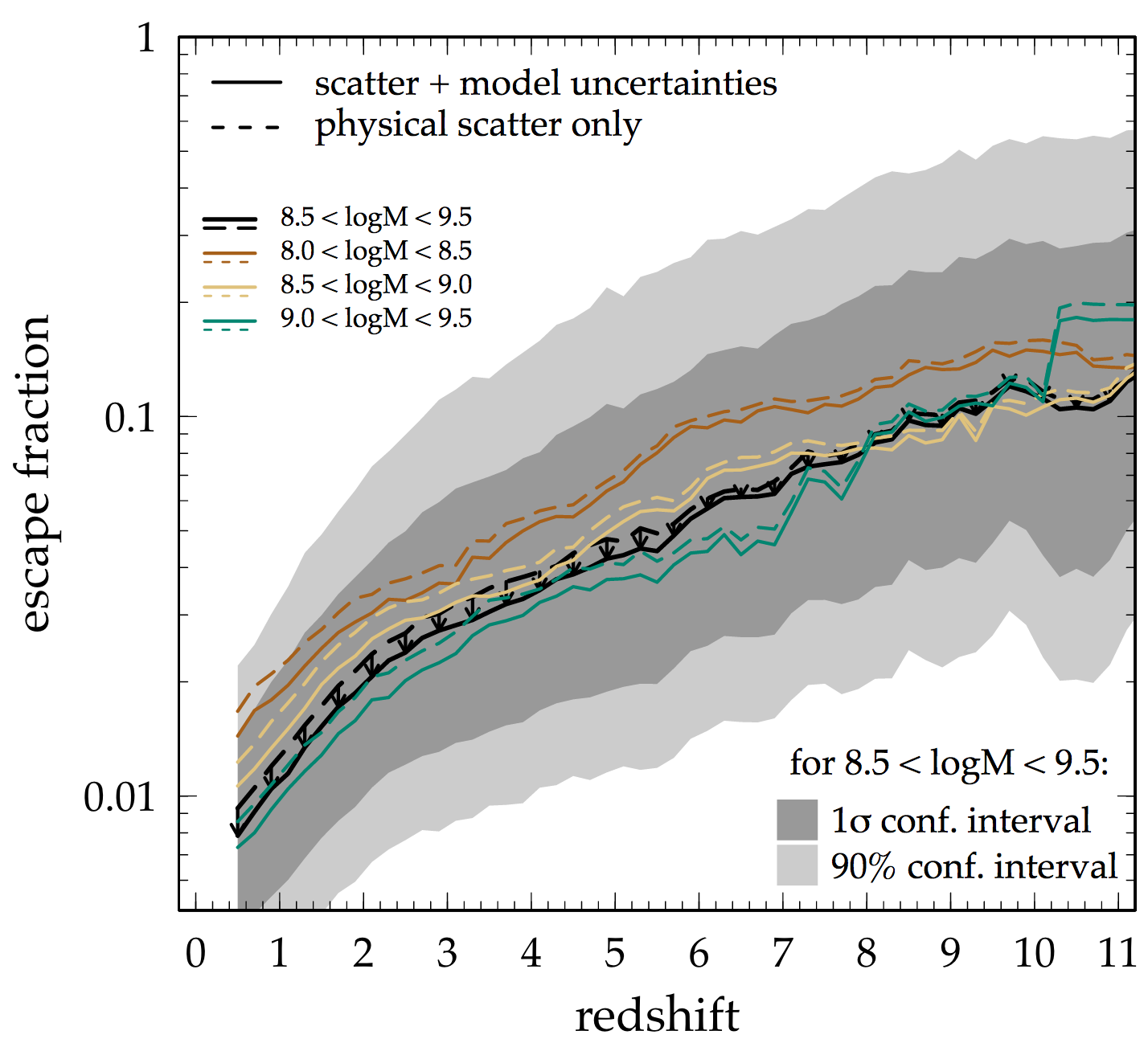
Are galaxies capable of reionizing the universe during the Epoch of Reionization? The escape fraction of ionizing continuum is an important number to answer this questions. However, there is no direct measurement of the escape fraction for these galaxies.
Instead, we use local high redshift analogs (local galaxies that resemble high-z galaxies in their physical nature) to predict the escape fraction of galaxies 12 billion years in the past. We find that the escape fraction is just enough to reionize the universe.
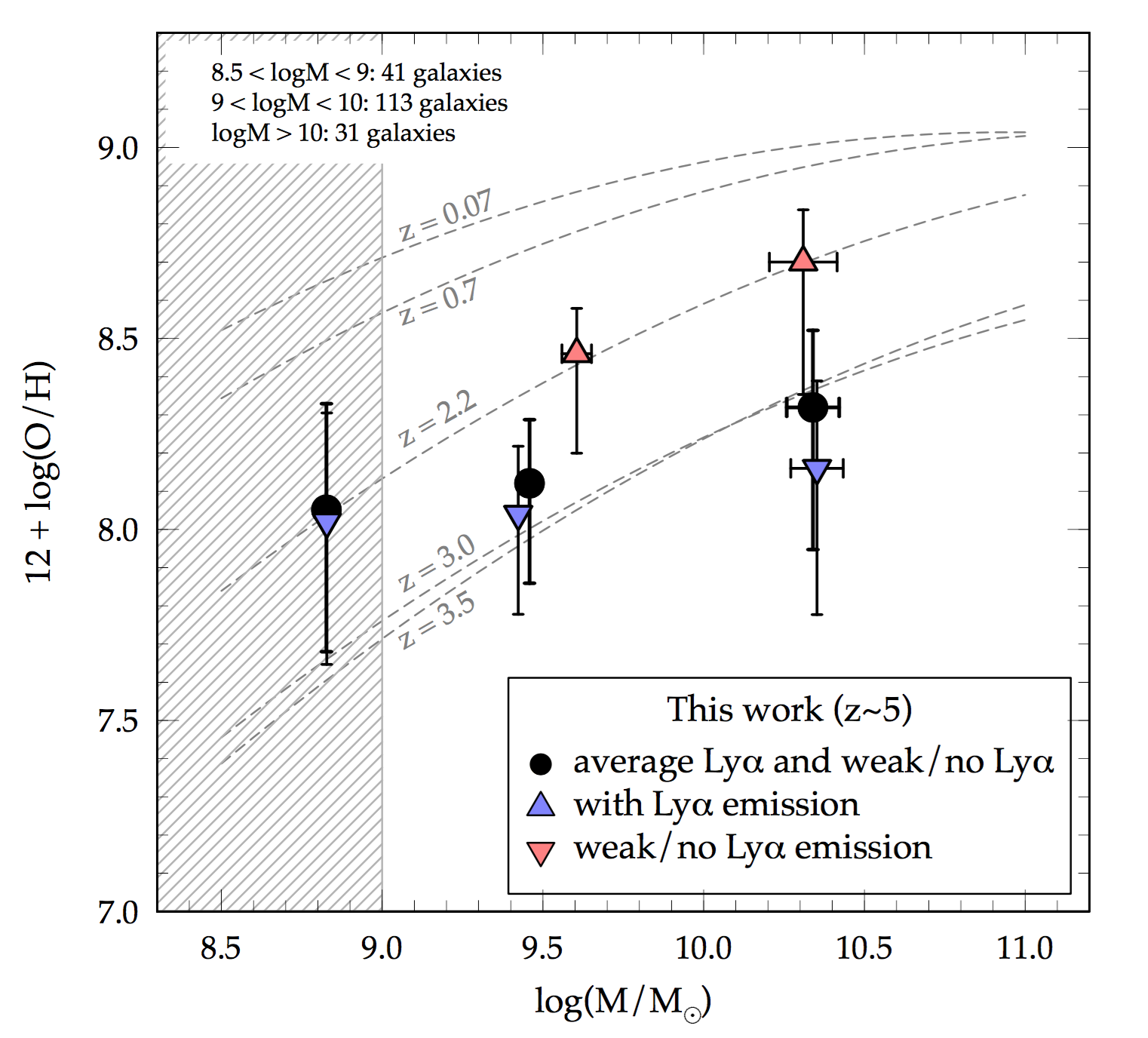
The relatively tigh mass-metallicity (MR) relation at low redshifts is set up by the balance of star formation, gas outflow through feedback, and gas inflow of prestine gas. The MR relation is likely to change at early cosmic times because of the much faster and more stochastic growth of galaxies. Unfortunately, metallicities cannot be measured directly for the earliest galaxies until JWST is up.
For the first time, we measure metallicity indirectly from UV absorption features for a large sample of galaxies at z=5, 12 billion years in the past. Its very weak dependence on stellar mass verifies the fast growth of these galaxies, likely by mergers and strong gas accretion.
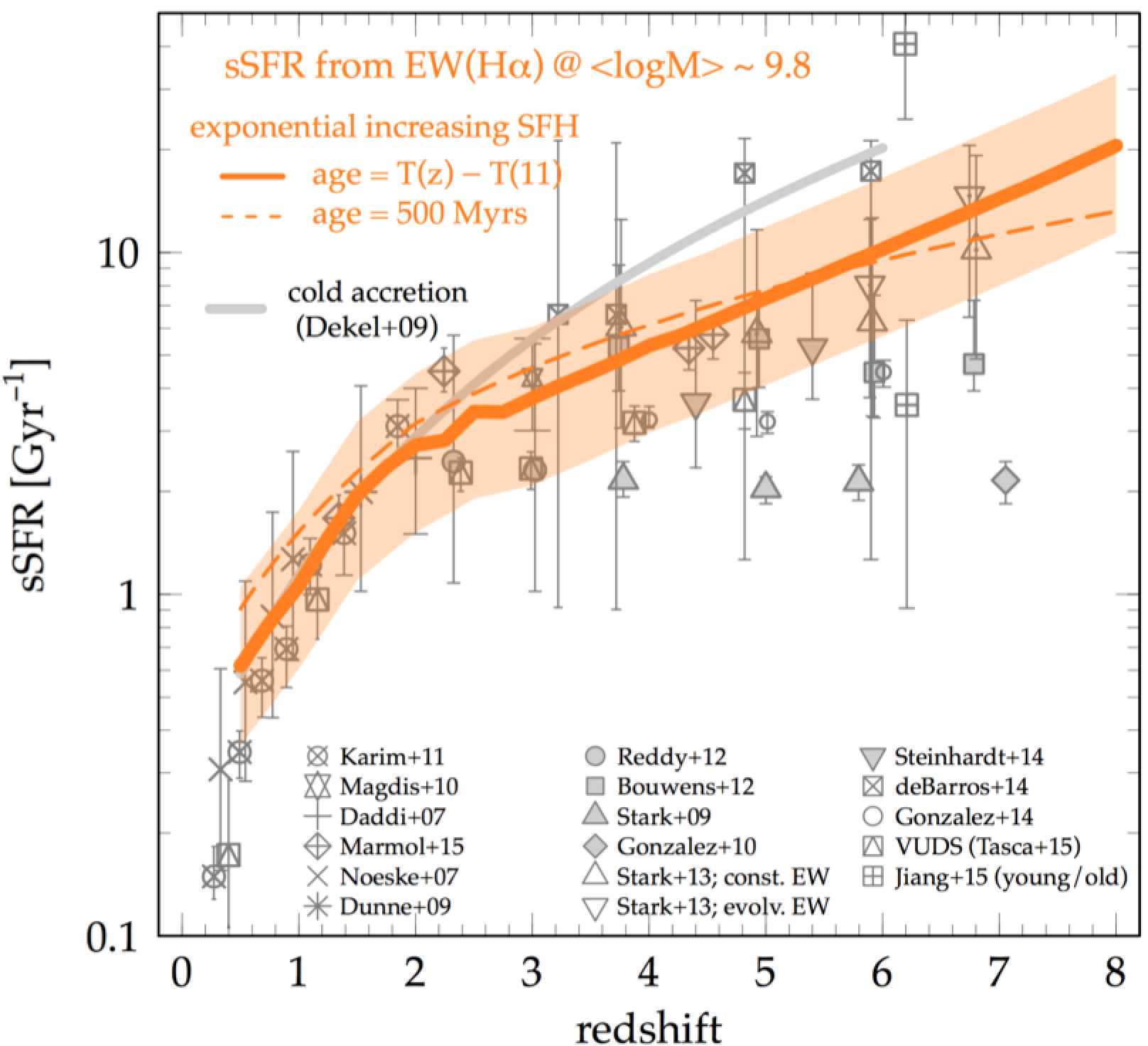
Galaxies at intermediate redshifts (6 billion years ago) are kown to show increase star formation activity compare to today's galaxies. Does this trend increase at even earlier times? We have consistently measured the specific star formation rate (sSFR, a measure for the mass-doubling time) from the Hα emission line for galaxies living 500 million years after the Big Bang. We find that they are doubling their masses within 100-200 million years with galaxy mergers being an important contribution to galaxy growth.
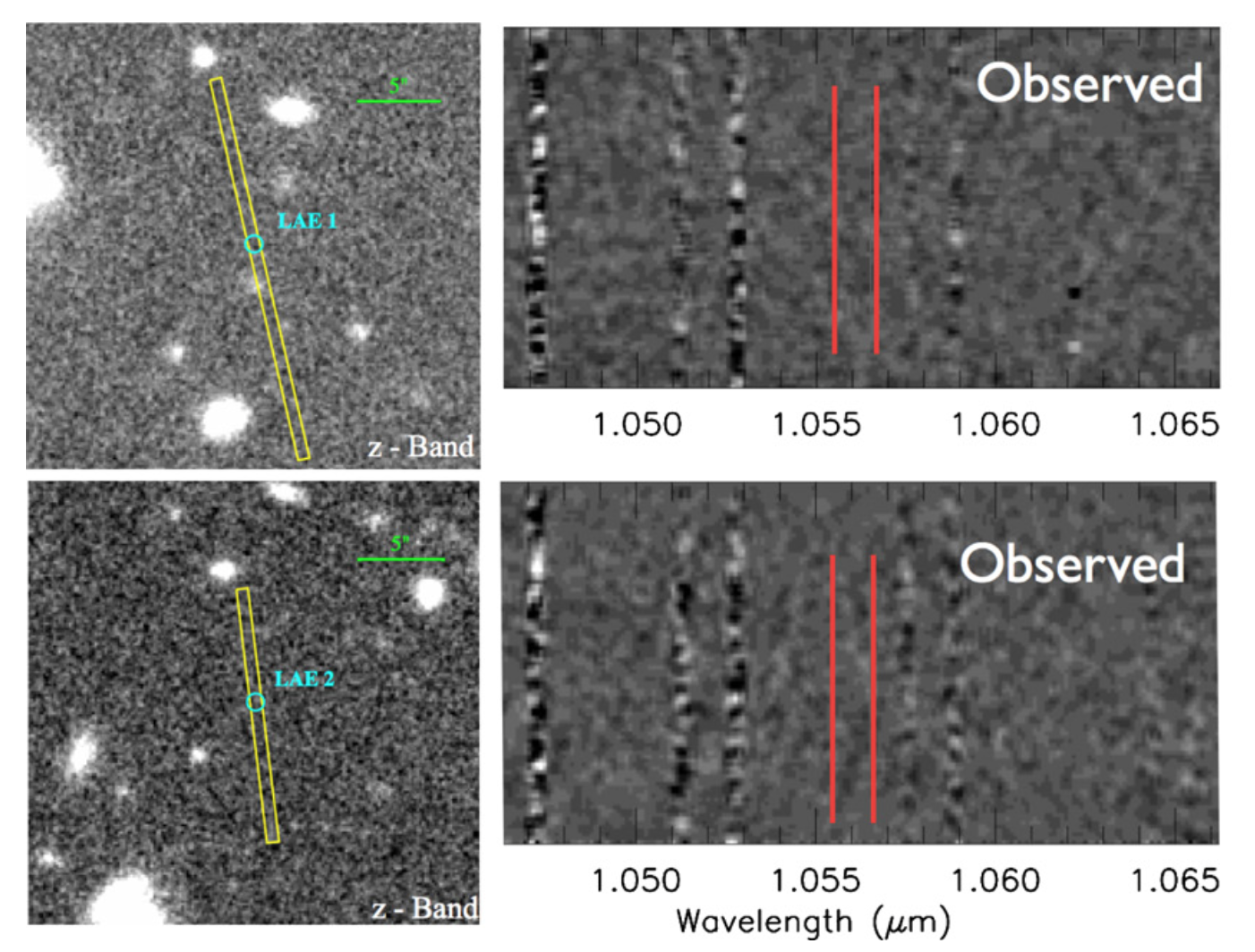
The cosmic reionization of hydrogen is measured to be finished by z=6 but its time evolution is unclear. It is commonly thought that reionization is caused by the ionizing radiation of massive stars in the first galaxies.
By confirming the non-detections of two galaxies at z=7.7 (600 million years after Big Bang), we were able to put important constraints on the time evolution of reionization. While 100% ionized hydrogen at z=6, we find only 30% to be ionized at z=8, which suggests a very fast reionization of the universe in only about 500 million years.
